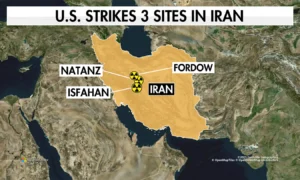At Thursday’s AWN Security Summit, Chief of Space Operations Gen. B. Chance Saltzman stated that the biggest challenge to space defense is the rapid development of technology by Russia and China.
“The PRC has developed what we’ve kind of, you know, tongue in cheek, called a ‘kill web.’ It’s nothing more than a series of hundreds of satellites that are a sensor network that provide real-time updates, targeting quality information of our force,” Saltzman warned, spotting this strategy as the most concerning aspect of U.S. adversaries’ improving space capabilities.
According to Saltzman, the Indo-Pacific area is the most hit hard by the satellite network, thus the United States needs to do more to disrupt it.
Although the space commander is worried about China’s kill web, that’s not all. Also mentioned by Saltzman was Beijing’s “accelerated ability to put capacity on orbit,” with the added point that Russia, another big U.S. rival, is showing strength in the same field.
According to Saltzman, the United States faces serious challenges in its space security from Russia and China, who are teaming together to establish the International Lunar Research Station, a collaborative lunar research program.
“The Russians are demonstrating reckless aggressive behaviors with regards to how they intend to contest the space domain that will have far-reaching impacts beyond any localized military effect,” Saltzman said, highlighting three primary areas of worry in Russia’s space technology production.
Space chief warns that Russia’s demonstrated kinetic kill capability, its cyber assault against Viasat the day it started its Ukrainian incursion and continued jamming efforts, and its ambition of putting a nuclear weapon on orbit all constitute serious threats to international stability. In 2021, before invading Ukraine, Russia destroyed a satellite and created a large amount of orbital debris.
The two U.S. rivals are stepping up their efforts to increase their space capabilities, which is why Saltzman is sounding the alarm. In order to power their proposed International Lunar Research Station, Beijing and the Kremlin inked an agreement last week to construct a combined nuclear power plant on the moon. Taking aim at the United States-led Artemis moon mission, the project’s goal is to establish a lunar outpost by the mid-2030s.









